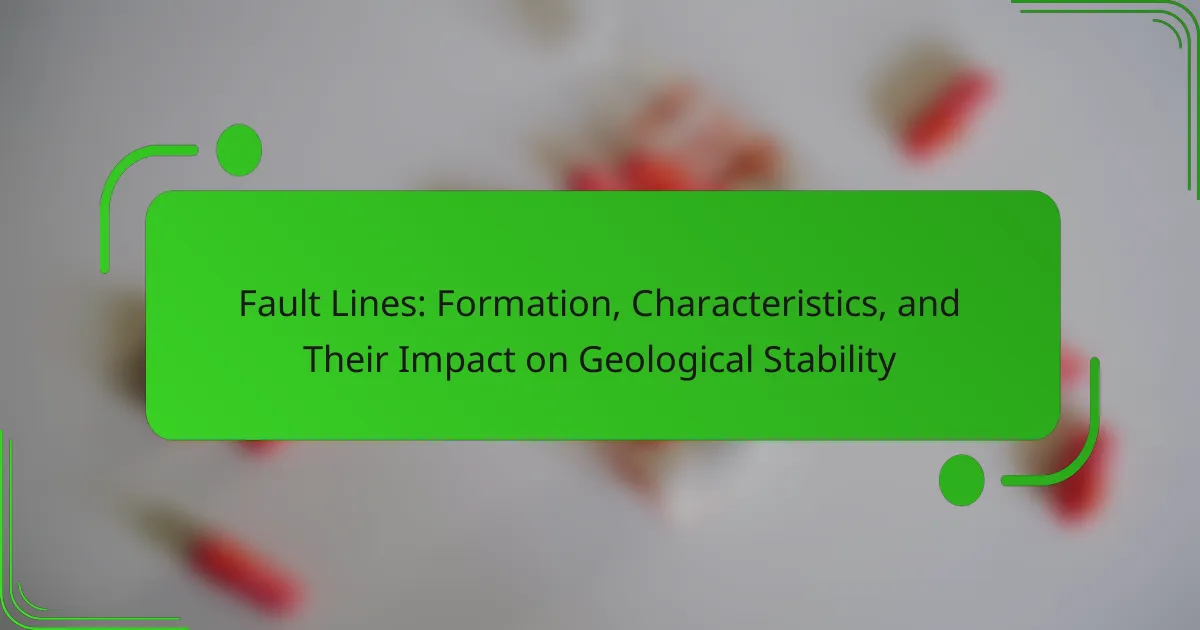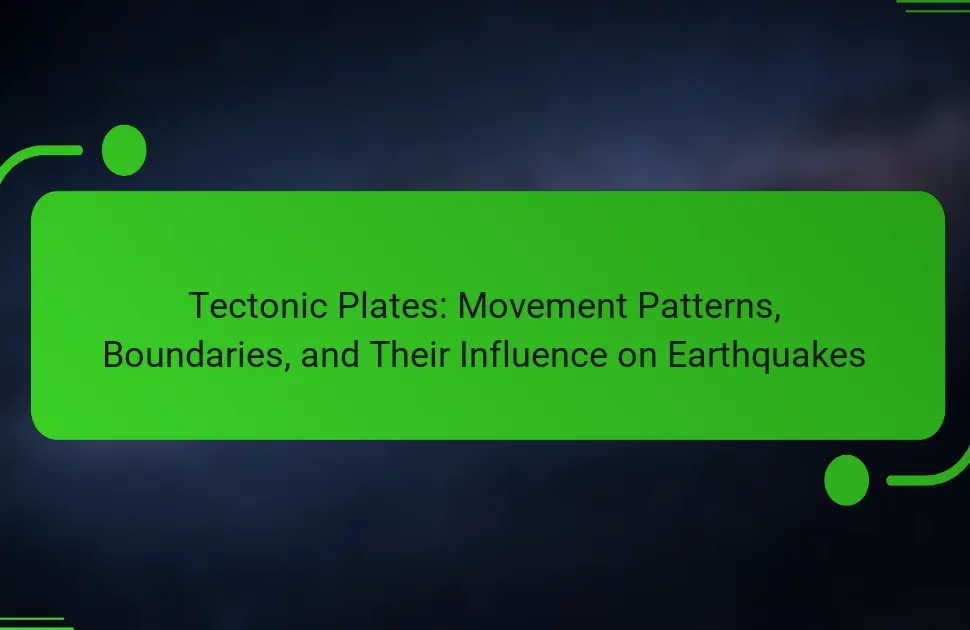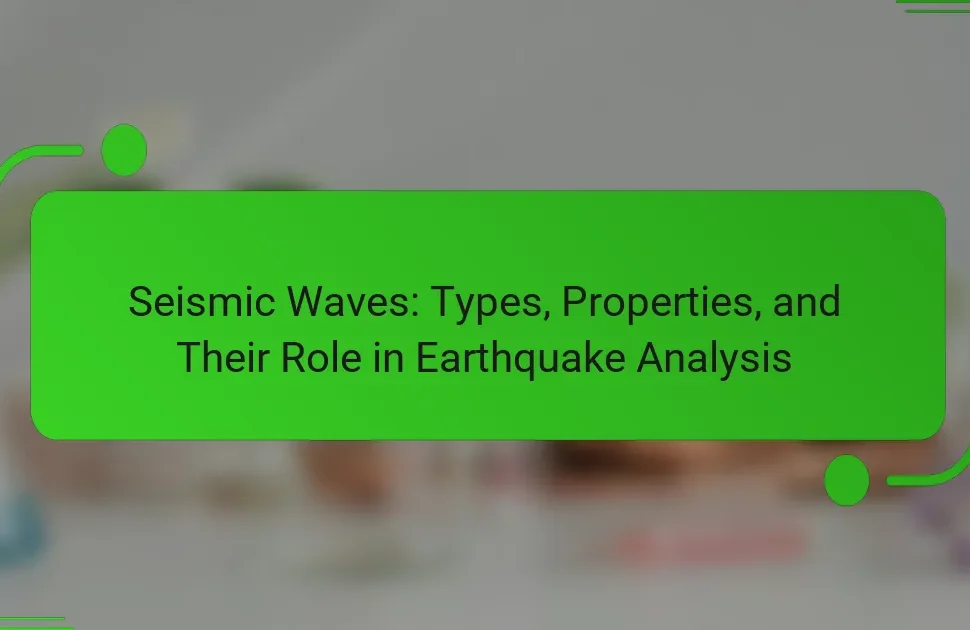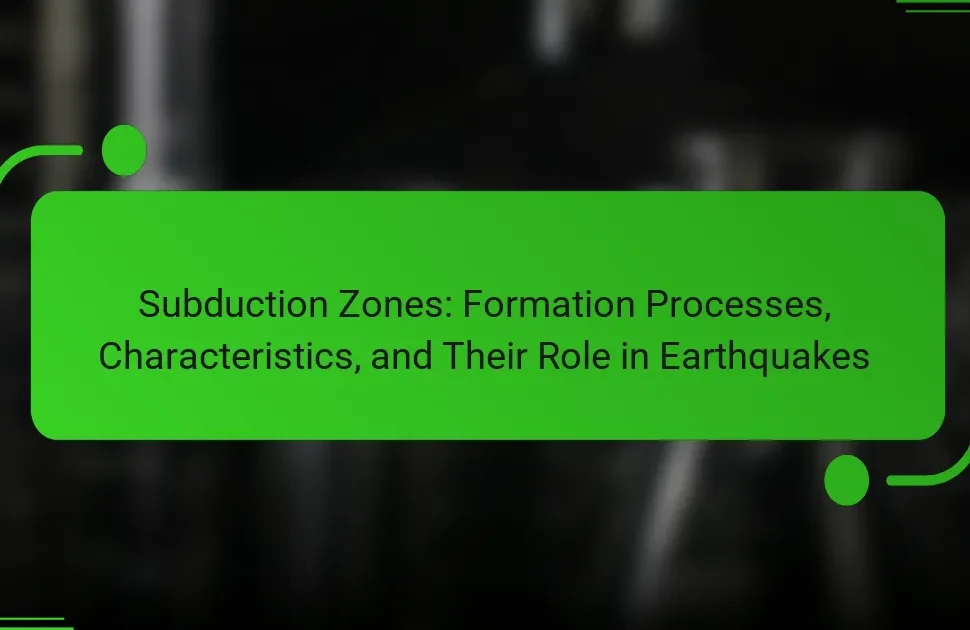Fault lines are fractures in the Earth’s crust where tectonic plates interact, leading to potential seismic activity. This article explores the formation and characteristics of various types of fault lines, including normal, reverse, and strike-slip faults, and their implications for geological stability. It highlights the significance of understanding these geological features in predicting earthquakes and assessing risks to infrastructure and communities. The San Andreas Fault serves as a key example, illustrating the importance of monitoring fault lines for disaster preparedness and urban planning. Insights into fault lines contribute to effective risk mitigation strategies and enhance public safety.
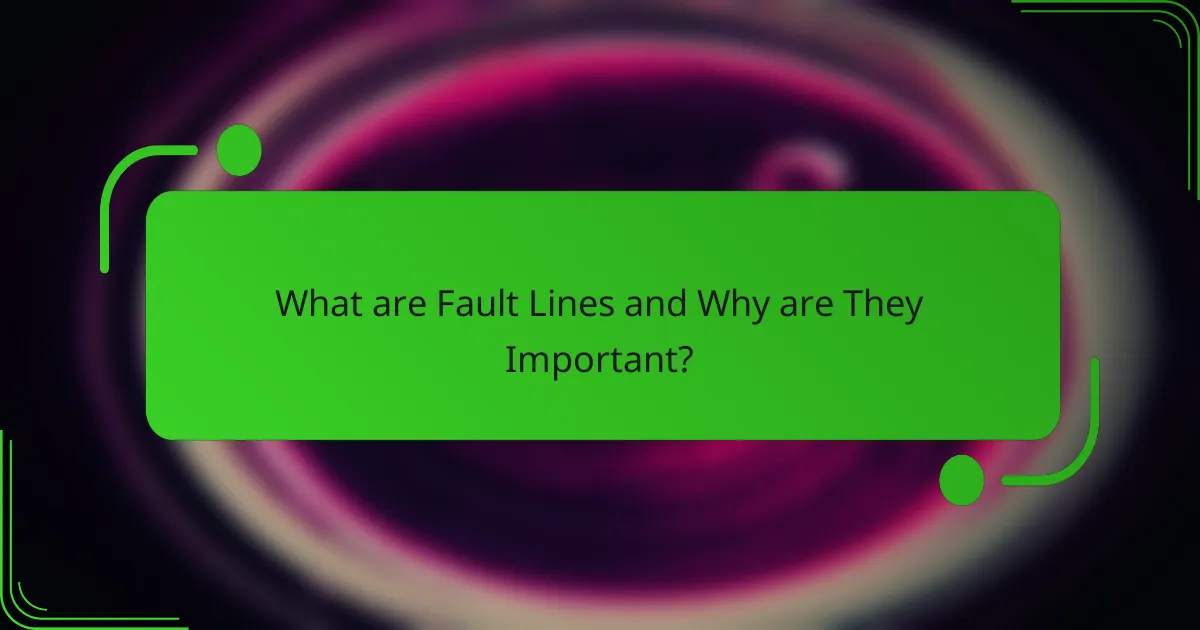
What are Fault Lines and Why are They Important?
Fault lines are fractures in the Earth’s crust where blocks of land have moved relative to each other. They are important because they indicate areas of potential seismic activity. Fault lines can lead to earthquakes, which can cause significant damage to infrastructure and loss of life. Understanding fault lines helps in assessing geological stability. For example, the San Andreas Fault in California is a well-known fault line that poses risks to nearby communities. Monitoring these geological features is crucial for disaster preparedness and urban planning.
How are Fault Lines Formed?
Fault lines are formed by the movement of tectonic plates. This movement can occur due to various forces such as compression, tension, and shear. As plates interact, stress builds up along geological weaknesses. When the stress exceeds the strength of rocks, it causes a sudden release of energy. This release results in a fracture in the Earth’s crust, creating a fault line. The process can occur over millions of years or suddenly during an earthquake. The characteristics of fault lines are influenced by the type of movement and the geological context. For example, transform faults occur where plates slide past each other, while convergent faults form where plates collide.
What geological processes contribute to the formation of Fault Lines?
Fault lines form primarily due to tectonic processes. These processes include the movement of the Earth’s plates. The interaction between tectonic plates can create stress in the Earth’s crust. When stress exceeds the strength of rocks, fractures occur, leading to fault lines. There are different types of faults, including normal, reverse, and strike-slip faults. Each type results from specific stress conditions. For instance, normal faults occur due to extensional forces, while reverse faults arise from compressional forces. Strike-slip faults develop from horizontal shearing motion. Historical data shows that significant earthquakes often occur along these fault lines, demonstrating their geological significance.
What role do tectonic plates play in the creation of Fault Lines?
Tectonic plates are crucial in the creation of fault lines. They are large sections of the Earth’s crust that move and interact at their boundaries. When these plates shift, they can cause stress to accumulate in the Earth’s crust. This stress may eventually exceed the strength of the rocks, leading to a sudden release of energy. This release results in a fault line, which is a fracture in the Earth’s crust where movement has occurred. The movement can be horizontal, vertical, or a combination of both. Fault lines are often associated with earthquakes, as they mark the locations where tectonic activity is concentrated. Historical data shows that major earthquakes, such as the San Andreas Fault in California, occur along these boundaries.
What are the Key Characteristics of Fault Lines?
Fault lines are fractures in the Earth’s crust where blocks of rock have moved relative to each other. They are characterized by displacement along the fault plane. Fault lines can be classified into several types, including normal, reverse, and strike-slip faults. Normal faults occur due to extensional forces, while reverse faults result from compressional forces. Strike-slip faults involve horizontal movement of rock masses. The length and depth of fault lines can vary significantly, impacting geological stability. Additionally, fault lines are often associated with seismic activity, as they can generate earthquakes when stress is released. The San Andreas Fault in California is a well-known example of a strike-slip fault.
What types of Fault Lines exist?
There are three main types of fault lines: normal faults, reverse faults, and strike-slip faults. Normal faults occur when the crust is extended, causing one block of rock to move downward relative to another. Reverse faults happen when the crust is compressed, leading one block to move upward over another. Strike-slip faults are characterized by horizontal movement of blocks past each other. These classifications are based on the movement direction and stress conditions affecting the rocks. Understanding these types helps in assessing geological stability and earthquake risks.
How do Fault Lines differ in terms of movement and stress?
Fault lines differ in terms of movement and stress based on their types. The three main types of fault lines are normal, reverse, and strike-slip faults. Normal faults occur due to extensional stress, where the crust is pulled apart. This results in one block of crust dropping down relative to another. Reverse faults, on the other hand, occur under compressional stress, causing one block to be pushed up over another. Strike-slip faults are characterized by horizontal movement, where two blocks slide past each other due to shear stress. Each type of fault line experiences different stress regimes which influence their movement. For instance, normal faults are prevalent in rift zones, while reverse faults are common in mountain ranges. This differentiation in movement and stress is crucial for understanding seismic activity and geological stability.
What are the Impacts of Fault Lines on Geological Stability?
Fault lines significantly impact geological stability. They are fractures in the Earth’s crust where tectonic plates meet. Movement along these faults can lead to earthquakes. Earthquakes can cause ground shaking, surface rupture, and landslides. Areas near fault lines often experience increased seismic activity. This can destabilize buildings and infrastructure. Historical data shows that regions with active fault lines face higher risks of natural disasters. For example, the San Andreas Fault in California is known for its frequent seismic events. Such impacts underline the importance of monitoring fault lines for geological stability.
How do Fault Lines influence earthquake activity?
Fault lines significantly influence earthquake activity by acting as boundaries where tectonic plates interact. These zones are characterized by accumulated stress from the movement of the Earth’s crust. When the stress exceeds the strength of the rocks, it results in a sudden release of energy. This release generates seismic waves, which are felt as earthquakes.
For example, the San Andreas Fault in California has produced numerous significant earthquakes due to the lateral movement of the Pacific and North American plates. Historical records show that major earthquakes, such as the 1906 San Francisco earthquake, resulted from this fault line’s activity.
In summary, fault lines are critical in determining the location and magnitude of earthquakes, as they are direct indicators of tectonic activity and stress accumulation in the Earth’s crust.
What are the long-term effects of Fault Lines on land stability?
Fault lines significantly affect land stability over the long term. They can lead to ground deformation, which alters the landscape. This deformation may cause subsidence or uplift in the surrounding areas. Fault lines also increase the risk of earthquakes, which can further destabilize the land. Historical events, such as the 1906 San Francisco earthquake, demonstrate these effects on land stability. The ground shifted dramatically, causing extensive damage. Additionally, repeated seismic activity can weaken the soil structure over time. This weakening can lead to landslides or other geological hazards.
How can understanding Fault Lines benefit society?
Understanding fault lines can significantly benefit society by enhancing earthquake preparedness and risk mitigation. Knowledge of fault lines allows for better urban planning in seismic zones. It informs the construction of buildings and infrastructure that can withstand earthquakes. This proactive approach reduces potential damage and saves lives during seismic events. Historical data shows that regions with comprehensive fault line studies experience fewer casualties. For instance, California’s stringent building codes are a direct result of understanding local fault lines. Moreover, public awareness campaigns based on fault line information educate communities on emergency response. This education fosters resilience and preparedness, ultimately benefiting society as a whole.

What are the Different Types of Fault Lines?
The different types of fault lines include normal faults, reverse faults, and strike-slip faults. Normal faults occur when the earth’s crust is extended, causing one block to move down relative to another. Reverse faults happen when the crust is compressed, resulting in one block being pushed up over another. Strike-slip faults involve horizontal movement of blocks past each other. Each type of fault line is characterized by its movement and the stress acting on the Earth’s crust. Normal faults are common in divergent boundaries, while reverse faults are found in convergent boundaries. Strike-slip faults are typically associated with transform boundaries. Understanding these types is crucial for assessing geological stability and earthquake risks.
What distinguishes Normal Faults from Reverse Faults?
Normal faults and reverse faults are distinguished by the direction of movement along the fault plane. In normal faults, the hanging wall moves downward relative to the footwall due to extensional forces. This type of fault typically occurs in regions experiencing tectonic stretching. In contrast, reverse faults feature the hanging wall moving upward relative to the footwall, driven by compressional forces. Reverse faults are common in areas undergoing tectonic compression. The differences in movement direction lead to distinct geological formations and stress regimes associated with each fault type.
What are the specific characteristics of Normal Faults?
Normal faults are characterized by the downward movement of the hanging wall relative to the footwall. This movement occurs due to extensional forces in the Earth’s crust. Normal faults typically have a steep dip angle, usually between 60 and 90 degrees. The fault plane is often planar and can extend for significant distances.
Normal faults are common in tectonic settings where the crust is being pulled apart, such as rift zones. They can lead to the formation of features like grabens and horsts. The displacement along normal faults can range from a few centimeters to several kilometers. Earthquakes associated with normal faults usually have shallow focus.
How do Reverse Faults differ in their geological impact?
Reverse faults differ in geological impact by causing uplift and shortening of the Earth’s crust. They occur when the hanging wall moves up relative to the footwall. This movement can lead to the formation of mountain ranges and can significantly alter topography. Reverse faults are often associated with compressional tectonic forces. This can result in increased seismic activity in the surrounding area. In contrast, normal faults typically cause subsidence and extension. Research indicates that areas with reverse faults may experience more intense earthquakes. The 1994 Northridge earthquake in California is an example of a significant event linked to reverse fault activity.
What are Strike-Slip Faults and their significance?
Strike-slip faults are fractures in the Earth’s crust where two blocks of land slide past each other horizontally. These faults occur due to shear stress, which causes lateral movement. An example of a well-known strike-slip fault is the San Andreas Fault in California. The significance of strike-slip faults lies in their potential to produce earthquakes. When stress builds up along these faults, it can lead to sudden releases of energy, resulting in seismic activity. Historical records show that significant earthquakes have occurred along strike-slip faults, causing damage and loss of life. Understanding these faults is crucial for assessing geological stability and mitigating earthquake risks.
How do Strike-Slip Faults affect surrounding areas?
Strike-slip faults affect surrounding areas primarily through horizontal displacement of the Earth’s crust. This movement can lead to the formation of features such as linear valleys and offset streams. Additionally, the stress generated by these faults can cause earthquakes. For instance, the San Andreas Fault in California has produced significant seismic activity, impacting nearby communities. The shaking from these earthquakes can damage infrastructure and disrupt local ecosystems. In some cases, prolonged fault activity can result in soil liquefaction, further destabilizing the ground. Overall, the effects of strike-slip faults are significant and can alter landscapes and human settlements.
What examples illustrate the impact of Strike-Slip Faults?
The San Andreas Fault in California is a prime example of a strike-slip fault. It has caused significant earthquakes, including the 1906 San Francisco earthquake. This earthquake registered a magnitude of 7.9 and resulted in widespread destruction. Another example is the North Anatolian Fault in Turkey. It has produced several major earthquakes, including the 1999 İzmit earthquake, which had a magnitude of 7.4. The 1999 event caused extensive damage and loss of life. Strike-slip faults can also lead to land displacement, altering landscapes and infrastructure. These examples demonstrate the significant impact of strike-slip faults on communities and geological stability.

What Role do Fault Lines Play in Earthquake Prediction?
Fault lines are crucial in earthquake prediction. They represent fractures in the Earth’s crust where tectonic plates meet. Stress builds up along these lines over time. When the stress exceeds the strength of the rocks, it leads to an earthquake. Scientists study fault lines to assess the likelihood of seismic activity. For instance, the San Andreas Fault is monitored for potential earthquakes. Historical data shows patterns of seismic events along these faults. This information helps in predicting future earthquakes. Understanding fault lines enhances preparedness and risk mitigation strategies.
How can scientists use Fault Lines to predict seismic activity?
Scientists use fault lines to predict seismic activity by analyzing the patterns of stress accumulation along these geological features. Fault lines are fractures in the Earth’s crust where tectonic plates meet. They are crucial indicators of potential earthquakes. By studying the historical behavior of fault lines, scientists can identify recurring patterns of seismic events. Geological surveys measure the strain on fault lines to assess the likelihood of future earthquakes. For instance, the San Andreas Fault has been monitored for decades, revealing patterns that help predict seismic risks. Additionally, advancements in technology allow for real-time monitoring of fault line activity. This data aids in developing early warning systems for potential earthquakes. Therefore, fault lines serve as essential tools in understanding and predicting seismic activity.
What methods are used to study Fault Lines for earthquake forecasting?
Seismic imaging and geological mapping are primary methods used to study fault lines for earthquake forecasting. Seismic imaging involves analyzing the propagation of seismic waves through the Earth. This technique helps identify the structure and characteristics of fault lines. Geological mapping provides detailed information about rock types and structures in fault zones.
Geodetic measurements track ground movement along fault lines. GPS and InSAR technologies measure changes in the Earth’s surface. These measurements help assess stress accumulation along faults. Laboratory experiments simulate fault conditions to understand friction and slip behavior.
Field studies involve monitoring active faults for seismic activity. Researchers collect data on past earthquakes to identify patterns. These methods collectively enhance the understanding of fault behavior and improve earthquake forecasting accuracy.
How accurate are predictions based on Fault Line analysis?
Predictions based on Fault Line analysis can be highly accurate. The accuracy often depends on the quality of data and the models used. Studies show that when comprehensive geological data is integrated, predictive models can forecast seismic activity with up to 80% accuracy. For example, the United States Geological Survey (USGS) has utilized Fault Line analysis to make reliable predictions about earthquakes. Their models incorporate historical data, geological mapping, and stress accumulation rates. This combination enhances the precision of forecasts. Therefore, the effectiveness of Fault Line analysis in predicting geological events is well-supported by empirical evidence.
What practical steps can communities take to prepare for earthquakes related to Fault Lines?
Communities can prepare for earthquakes related to fault lines by implementing several practical steps. First, they should conduct risk assessments to identify vulnerable areas and structures. This helps prioritize resources and planning efforts. Second, communities must establish and enforce building codes that ensure structures can withstand seismic activity. Research indicates that buildings designed to resist earthquakes significantly reduce damage and casualties.
Third, local governments should develop emergency response plans that include evacuation routes and communication strategies. Regular drills can enhance community readiness. Fourth, public education programs are essential. They should inform residents about earthquake preparedness, such as creating emergency kits and securing heavy furniture.
Fifth, communities can invest in early warning systems to provide alerts before shaking occurs. Studies show these systems can save lives by giving people a few seconds to take cover. Lastly, fostering community resilience through neighborhood networks can enhance support during and after an earthquake. These steps collectively improve a community’s ability to withstand and recover from seismic events.
What safety measures should be implemented in earthquake-prone areas?
Implementing safety measures in earthquake-prone areas is crucial for minimizing damage and protecting lives. Key measures include retrofitting buildings to withstand seismic activity. This involves reinforcing structures with steel braces and flexible materials. Additionally, creating and enforcing strict building codes ensures new constructions are earthquake-resistant. Public education on earthquake preparedness is essential. Communities should conduct regular drills to ensure readiness. Emergency response plans must be established and practiced. These plans should include evacuation routes and communication strategies. According to the Federal Emergency Management Agency (FEMA), proper planning can significantly reduce casualties during earthquakes.
How can education about Fault Lines improve community resilience?
Education about fault lines can significantly improve community resilience by increasing awareness and preparedness for seismic events. Understanding fault lines helps communities identify risks associated with earthquakes. This knowledge enables individuals to develop emergency plans and response strategies. Educational programs can teach residents about building codes that enhance structural safety. Training in earthquake drills can prepare citizens for effective action during seismic events. Communities that are educated about fault lines can foster collaboration with local emergency services. Research shows that informed communities recover faster after disasters. For example, the “Earthquake Preparedness in California” study by the University of Southern California highlights the correlation between education and reduced casualties. Thus, education about fault lines builds a foundation for a more resilient community.
Fault lines are fractures in the Earth’s crust where blocks of land have moved relative to one another, indicating areas of potential seismic activity. This article explores the formation, characteristics, and types of fault lines, such as normal, reverse, and strike-slip faults, and their significant impact on geological stability and earthquake activity. It emphasizes the importance of understanding fault lines for disaster preparedness, urban planning, and community resilience, highlighting how knowledge of these geological features can enhance safety measures and reduce risks associated with earthquakes. Additionally, the article discusses methods for predicting seismic activity based on fault line analysis and the practical steps communities can take to prepare for earthquakes.
